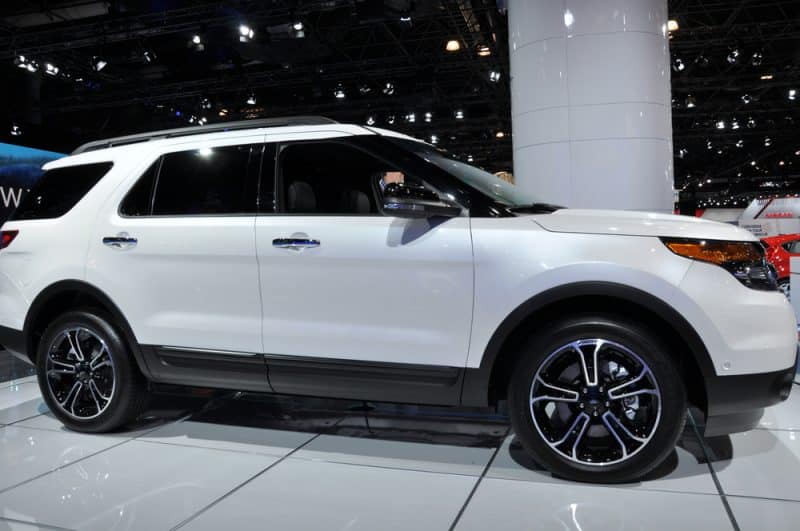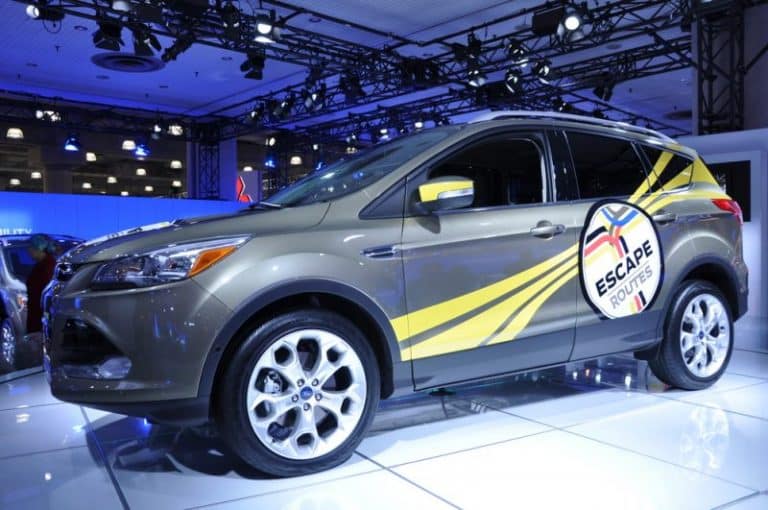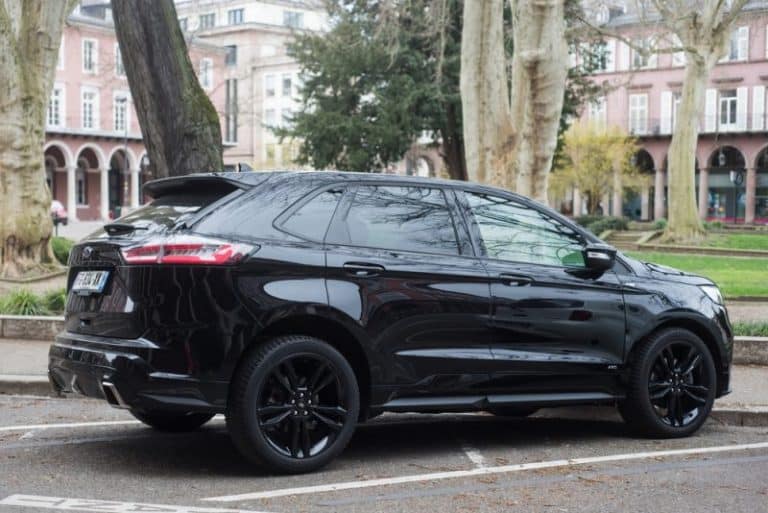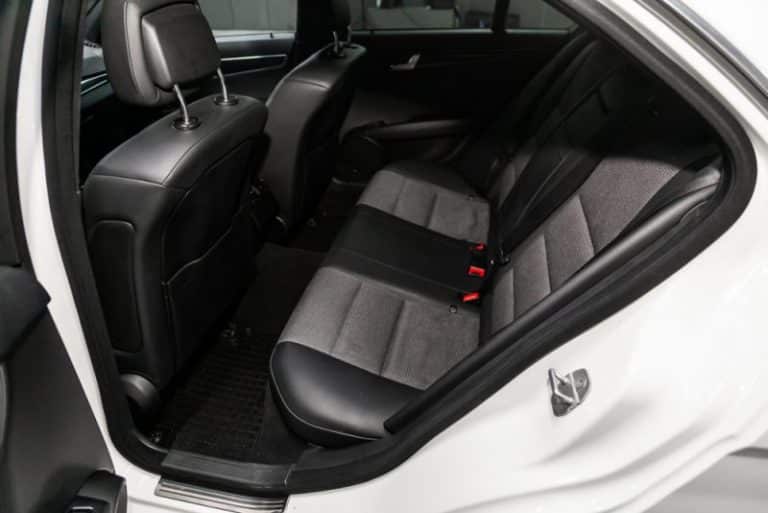How To Tell If Ford Escape Is AWD? (Read This First)
The Ford Escape is a sound SUV boasting advanced features and capabilities. AWD is one of these many features, but it’s hard to tell with no written tag on the car.
Reading on, you’ll learn how to find out if a Ford Escape is AWD and expand your knowledge of AWD. Meantime you may also know whether some of the following Ford models are AWD or not.
It’s simple to tell if a Ford escape is an AWD by checking under the car. If a drive shaft attaches to the tail differential, it signifies that the Ford Escape is an AWD. If there isn’t any driveshaft connecting to the tail differential, the car is an FWD.
What Is AWD?

As the name suggests, an all-wheel drive is a system that powers the front wheels and the rear wheels simultaneously.
However, there are essentially two different kinds of drivetrains that constitute the AWD. One does drive every wheel constantly, and some engineers call this a full-time AWD.
The other, known as the automatic AWD or part-time AWD, usually functions as a two-wheel drive.
Power is conveyed to all four wheels in the part-time system only when the car needs extra traction control.
#1. How All-wheel-drive Works
Both AWD systems, full-time and part-time, usually function without any influence from the driver.
However, there are selectable modes on some of the systems that permit a certain level of control.
This control directs the amount of power channeled to the wheels. Each wheel receives torque by a sequence of differentials, multi-plate clutches, and viscous couplings.
All these systems assist in allotting power to the wheels to optimize the vehicle’s traction. The car still runs efficiently under usual conditions.
#2. Full-time AWD
In the full-time AWD, the front axles and rear axles are running simultaneously.
This type of AWD can assist the car handle better and guarantee that maximum power gets on the road on dry road surfaces.
Also, slippery environments such as mud, ice, and snow deliver extra traction for secure and safer handling.
#3. Part-time AWD
The part-time AWD directs torque to a pair of driven wheels in regular operation. It could be to the front or rear wheels; it depends on the model or brand of the car.
The system automatically involves the other pair of wheels whenever the road conditions require additional traction.
Recent part-time AWD employs a range of electronic sensors.
These sensors send data to a computer that regulates the power level sent to each wheel.
#4. Pros of AWD
The outstanding quality of the AWD is that drivers don’t have to bother about involving the system.
Every wheel is driven simultaneously in AWD, or the system directs power whenever it senses a lack of traction.
AWD enjoys application on a wide range of vehicles, from performance models to compact sedans to SUVs of many sizes. As a result, it offers a wide variety of choices.
#5. Cons of AWD
Despite its capabilities on slippery roads, AWD is usually given less consideration by regular off-roaders.
This notion, however, is being changed as recent AWD systems are building more capabilities.
Nevertheless, plenty of drivers who enjoy venturing into off-roads still wishes to decide when to involve a four-wheel-drive.
Furthermore, AWD usually surges the cost of cars and, in many situations, decreases fuel economy.
What is the difference between AWD and FWD?
Since we’ve already looked at AWD, let’s take some time and explore FWD before highlighting their differences.
#1. Front-wheel-drive (FWD)
FWD systems direct power to the front wheels of the car. The engine solely drives the front wheels while the hind wheels don’t get any power.
Recent FWD cars have a transverse engine; you can find the engine and transmission over the front wheels.
#2. Pros of FWD
With the motor’s weight right above the driven wheels, this helps improve the traction and acceleration on slippery roads.
Their systems aren’t so complex; therefore, they are cheaper to maintain.
Since the front wheels pull the vehicle, it lessens issues like decreasing traction and fishtailing, especially when the car speeds through a curve.
#3. Cons of FWD
FWD systems are inclined to wear out quicker than less intricate rear-wheel-drive systems. The front tires are likely to have a shorter lifespan since they bear the brunt of the weight.
In addition, the front tires are responsible for accelerating, braking, and steering forces. All these can wear the tire very fast.
FWD also has performance deficiencies. One such deficiency is the torque steer.
Here is where uneven power application directed to a single front wheel makes the car pull to either side. Again, this occurs as a result of heavy acceleration.
#4. FWD and AWD Differences
The major difference between FWD and AWD is which tires the engine directs its power. The engine sends its power to the front axle if you own an FWD.
The AWD engine directs power to the front axles and rear axles. As a result, an AWD car is likely to provide an all-around performance on roads.
AWD spurs and keeps your car moving on a tight rein, and they are superior on unpaved roads and off-road surfaces.
AWD has been designed to optimize and gain traction on every surface. FWD cars also try on minor off-road surfaces; a little snow or mud won’t stop a recent FWD vehicle.
AWD cars are sensitive to any slip on the wheels and adjust easier. AWD vehicles can adapt to oily roads and roads with wet leaves or even pedestrian crosswalks with reflective paint.
On a rainy day, an AWD will remain steady on the asphalt. AWD cars engage immediately when they sense wheels are slipping.
Although, if the climate in your residency is minor or even temperate winter weather, an FWD car might profit you.
Alternatively, FWD can also manage snow conditions as the engine resides above the wheels. But, of course, that adds additional weight to deliver needed traction.
Furthermore, if you have an FWD or are about to buy one, you can consider purchasing winter tires. If you’d like the costs of buying and operating to be on the low side, you can get an FWD.
However, if there’s heavy rainfall in the place you reside, AWD is better.
How To Tell If Ford Escape Is AWD Or FWD?
Looking under the car, you can tell if your Ford Escape is an SUV body-style AWD. For example, if there’s a drive shaft joining to the end differential, it means the Ford Escape is an AWD.
Similarly, you can tell if a Ford Escape is an FWD if it doesn’t have any shaft connected to the rear differential.
How Do You Turn On All-Wheel-Drive Ford Escape?
All-wheel-drive can’t be turned on in Ford Escape because you don’t need to. Instead, Ford Escape has an intelligent AWD system that monitors the environment.
Ford Escape remains in front-wheel-drive except when the vehicle loses traction.
Any minor change in traction on the wheels, the system automatically makes the needed adjustment and directs power to the wheels.
The system monitors variables like the steering wheel’s angle, turning rate, and acceleration pedal’s location.
It scans these variables every 16 milliseconds and uses them to read road conditions and traction of the wheels.
Conclusion
If a Ford Escape is an AWD, you can identify if a driveshaft underneath the car connects to the rear differential.
An all-wheel drive is a system that powers the front and rear wheels every time.
The engine directs power and torque to the entire wheels in an AWD. In an FWD, the engine sends power to the front wheels.
You don’t need to turn on AWD in a Ford Escape. Instead, the system is designed to automatically direct power to the wheels when it senses a loss of traction.






